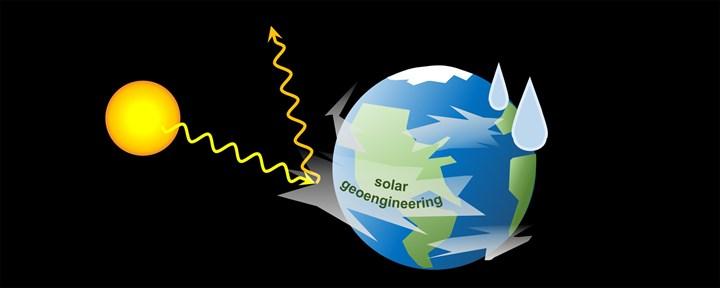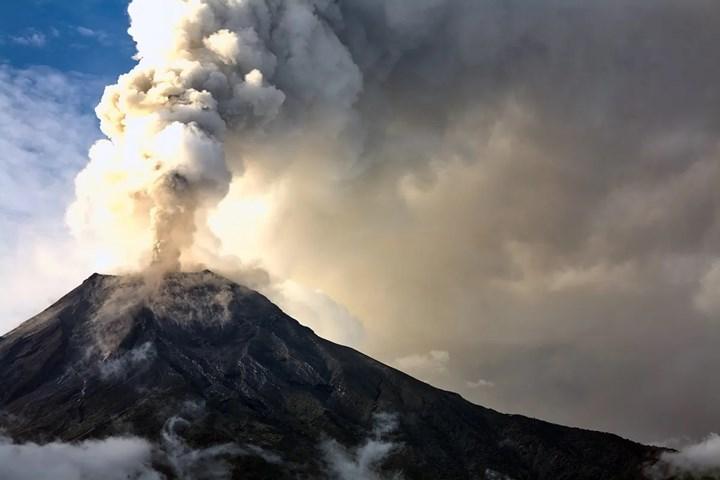 A small environmental initiative called Make Sunsets has begun injecting sulfur dioxide particles into the stratosphere to cool the planet as a provocative and unproven method to combat a growing climate crisis.
A small environmental initiative called Make Sunsets has begun injecting sulfur dioxide particles into the stratosphere to cool the planet as a provocative and unproven method to combat a growing climate crisis.Luke Iseman, CEO and founder of Make Sunsets, began releasing sulfur dioxide into the atmosphere in balloons of about 2 meters in the Mexican state of Baja California late last year. The aim of this initiative is to increase the amount of sulfur dioxide in the upper atmosphere and reflect back the Sun’s rays that warm the Earth. Despite its small scale and uncomplicated methodology, this is probably the first time the initiative has been attempted, according to MIT Technology Review.
What is solar geoengineering?
 This method, often referred to as “solar geoengineering,” is an approach to cooling the earth by reflecting sunlight back into space or altering clouds, and has been widely debated. The idea in question was first introduced by Professor at Harvard University in 1989. It was put forward by David Keith. Despite all these years, we don’t even know if this idea will work or if it will lead to unintended consequences. Moreover, there is no clear idea about which gases and particles should be used.
This method, often referred to as “solar geoengineering,” is an approach to cooling the earth by reflecting sunlight back into space or altering clouds, and has been widely debated. The idea in question was first introduced by Professor at Harvard University in 1989. It was put forward by David Keith. Despite all these years, we don’t even know if this idea will work or if it will lead to unintended consequences. Moreover, there is no clear idea about which gases and particles should be used.Geoengineering, long a taboo among climate experts, considered too dangerous even for research, is becoming more and more mainstream. Congress awarded $4 million for similar research to the National Oceanic and Atmospheric Administration in 2019. As the world continues to lag behind the goals of the Paris Agreement and the cost of climate change increases, is geoengineering an idea worth taking seriously, or is it a distraction for the world trying to move away from fossil fuels?
Why does the Earth’s cooling matter?
50 years ago, in 1965, a group of scientific advisors presented the first report on global warming. Since then, geoengineering proposals have evolved and fall into two broad categories:
Carbon dioxide suppression: In recent years several companies have introduced devices that extract carbon dioxide from the atmosphere through a process called Direct Air Capture. Other strategies for carbon removal include planting trees, fertilizing the oceans with iron to increase carbon dioxide absorption to encourage phytoplankton bloom, and raising the pH of the oceans to counter the acidification that threatens marine ecosystems. In short, the main focus is to increase the amount of trees, prevent damage to the seas and reduce carbon emissions.
 Solar radiation management: In 1991, a volcano in the Philippines released 20 million tons of sulfur dioxide gas into the atmosphere, causing global temperatures to drop temporarily by as much as 0.5 degrees Celsius. As a result of this naturally occurring experiment, the foundations of controversial solar geoengineering were laid. Other proposals in this area include solutions such as giant mirrors or reflective bubbles to reflect the sun’s rays.
Solar radiation management: In 1991, a volcano in the Philippines released 20 million tons of sulfur dioxide gas into the atmosphere, causing global temperatures to drop temporarily by as much as 0.5 degrees Celsius. As a result of this naturally occurring experiment, the foundations of controversial solar geoengineering were laid. Other proposals in this area include solutions such as giant mirrors or reflective bubbles to reflect the sun’s rays.Decarbonization via Direct Air Capture is typically considered a safe and elegant form of geoengineering. However, the technology is still very young and extremely expensive. On the other hand, sulfur aerosol injection is relatively easy and inexpensive to deploy on a planetary scale, at a cost of as little as $2 billion per year.
In fact, trying to reduce and prevent carbon dioxide emissions seems to be just a time-saving gimmick. Because carbon dioxide remains in the atmosphere for thousands of years, it is thought that eliminating carbon emissions will only prevent the world from warming further. Even if the world achieves decarbonisation by 2050, extreme weather events and sea level rise will pose a greater threat for centuries to come than now. However, we have to take these steps for the future of the world.
Those who see geoengineering as risky warn
 If the possibility of experimenting with the atmosphere sounds frightening to even consider, you’re not alone. Since last January, more than 360 climate and governance experts have signed an open letter urging national governments and the United Nations to restrict the development of solar engineering technology, claiming it poses an “unacceptable risk” for three main reasons.
If the possibility of experimenting with the atmosphere sounds frightening to even consider, you’re not alone. Since last January, more than 360 climate and governance experts have signed an open letter urging national governments and the United Nations to restrict the development of solar engineering technology, claiming it poses an “unacceptable risk” for three main reasons.Side effects: Spraying sulfur into the stratosphere can lower the earth’s temperature, but it can also turn the skies white, change weather patterns, increase the spread of malaria, deplete the ozone layer and block the light plants need to grow. Some areas may suffer while others may benefit, creating the potential for conflict.
It is unknown how long releasing gases into the atmosphere will work and what the long-term impact will be, and this is a big risk. If humanity becomes dependent on aerosol injection as a substitute for, rather than a complement to, decarbonisation, a turnaround may be impossible.
Why is the geoengineering debate heating up?
A 2019 survey of international climate policy negotiators found that support for geoengineering was higher among respondents who expected significant climate change damage in their home country. But the overwhelming majority of scientists agree that more research needs to be done before we start sending copious amounts of sulfur dioxide into the atmosphere to fend off the Sun’s warming rays.
Supporters of the idea of climate interventions such as solar geoengineering argue that the world is accelerating towards a climate catastrophe and we cannot afford to sit idly by. And oddly enough, startups like Make Sunsets aren’t technically breaking any rules either. Because there are no laws or treaties that would prevent a private company from engaging in geoengineering.